Though it is famous as the home of the ancient Incan site of Machu Picchu, Peru is so much more than this Andean treasure. Known for its rich indigenous cultures, starkly diverse landscapes and top-notch gastronomy, Peru’s tourist attractions are vast and places to visit in Peru are as varied as the country is large.
From high-altitude treks weaving between traditional Andean villages, to oases hidden among desert dunes, to pristine Amazon jungle, there is no shortage of fascination, things to do and adventures to be had in this proud and diverse country.
Peru has two distinct seasons, and most tourists visit Peru from May to October, during the dry season for most of the country including the capital of Lima. Peru is busiest in July and August, while less people visit during the rainy season from November to April.
Temperatures vary widely throughout the country and correspond to elevation and ecology. The coast is largely desert, so it is dry most of the time and has temperatures ranging from 25°C-35°C. Temperatures can climb even higher than this during the dry season in the Amazon, and during the wet season rivers can swell in the jungle, making travel difficult.
The Andes are a bit different when it comes to precipitation patterns, as they receive heavy afternoon downpours from December to March, when temperatures in the mountains range from 18°C-20°C and can dip down several degrees lower at night. May to October brings warmer temperatures in the highlands, ranging from 20°C-25°C. It is also important to note that the Inca Trail leading to Machu Picchu is closed each February for cleanup.
Dry Season
May — October
Average temperature
61-70 °F
17–22 °C
Average number of rainy days 2-3
Wet Season
November — April
Average temperature
67–79 °F
20–24 °C
Average number of rainy days 11–18
Average temperature
Average number of rainy days
The following links are affiliate links to Amazon.com or other local Amazon web stores - it depends on your location. The listed prices of all items are the US Amazon store prices at the time of publishing. If you are visiting us from outside the USA and there is an analogous item in your local Amazon web store, you'll be redirected there automatically. We do our best to keep all prices and descriptions up to date, but if you find any errors or inaccuracies, don't hesitate to contact us using our feedback page!
Recommended Travel Guides4
City walking11 items
One of the most cosmopolitan cities on its continent, the Miraflores neighborhood in Peru’s capital of Lima is a hub for city walking with its parks, artisanal craft vendors, and acclaimed cuisine. The narrow streets of Cusco, Peru’s famous mountain city, are also great to stroll. In addition to these cities, Peru has an abundance of pre-Incan treasures which are fascinating to explore. These ruins include the ancient Chimor city of Chan Chan, the UNESCO World Heritage Site of Chavin de Huantar, and the walled city of Kuelap.
It’s important to remember that the sun is strong in Peru, both in the Andes and the desert, so it’s a good idea to bring sunscreen. Though Miraflores in Lima is generally safe, there is occasional pickpocketing in Lima and Cusco, so if you’re concerned it may be a good idea to buy a secure belt to keep your money in.
-
Good daypack
-
Sunglasses
-
Face sunblock
-
Body sunblock
-
Hats
-
Camera (portraits and city views)
-
Portable battery charger (for your phone and camera)
-
Facial cleansing wipes
-
Hand wipes
-
Travel umbrella
-
Secure belt
Mount hiking35 items
There are countless treks in the mountains of Peru, the most famous being the Inca trail. It is 26 miles through fantastic cloud forests and awe-inspiring Incan ruins leading to the famous lost city, Machu Picchu. The trail takes a total of 4 days and is generally timed so that you arrive at the monumental Machu Picchu near sunrise. It’s important to note that this trail is closed for cleanup during February, and that you must book pretty far in advance and obtain a permit for the trek.
If that seems like too much bureaucracy, there are some great alternatives to the Inca Trail. The 5-day Salkantay trek is a less crowded journey that also ends in the famous city of Machu Picchu. It begins in the town of Mollepata and, like the Inca Trail, it is an ancient footpath that weaves through the Andes. The 4-day Lares trek is a moderate hike which takes you through remote and authentic indigenous communities in Cusco’s Sacred Valley, starting from Pumahuanca and ending at the hot springs of Lares.
Other popular treks are the stunning Cordillera Blanca in Huaraz; Colca Canyon in Arequipa, which is Peru’s third-most visited tourist destination; the 5-day Ausangate trek near Cusco; and the 4-day Choquequirao trek that ventures into the Apurimac Canyon.
The following is a list of what to pack for Machu Picchu, but it would really come in handy on any hike in the Peruvian highlands: it’s good to bring snacks as well as a tip for your guide, a headlamp, toiletries, warm clothes, hiking boots, water purifying tablets, and rain gear, as even during the dry season you might see rain in the mountains. It’s also important to note that the Andes are exceptionally high, and any trek will be made more difficult by the altitude. Usually, it’s a good idea to spend a few days before your trek in the mountains, just letting your body adjust to the altitude.
-
Good daypack, 30 liters should suffice 4-5 day hiking
-
Good waterproof hiking boots
-
Another alternative is jungle boots
-
Light trekking sandals
-
Flip-flops (for evenings in the camp)
-
Trekking poles
-
Warm trekking gloves
-
Long hiking pants
-
Long sleeve shirt
-
Trekking socks
-
Thermal tops
-
Thermal pants
-
Hiking hat
-
Fleece jacket
-
Softshell jacket
-
Jungle rain poncho
-
Torch and headlamp
-
Extra torch batteries
-
Anti leech socks
-
High DEET insect repellent
-
Face sunblock
-
Lighter
-
Knife
-
Good binocular
-
Travel towel
-
Swimsuit
-
Proper sleeping bag
-
Basic toiletries and antiseptic wipes
-
Waterproof bandage
-
Altitude sickness pills
-
First aid kit
Pack all the essentials and extra items you might need as in the jungle you cannot get any help, so it’s extremely important to be prepared.
-
Portable battery charger (for your phone and camera)
-
Water bottle
-
Snacks and protein bars
-
Disposable urinal
Jungle trekking24 items
While there aren’t as many set paths, there are a number of tour operators in Peru offering treks into the pristine Amazon jungle. Manu National Park is one popular rainforest destination. Just four hours from the capital, the coastal desert city of Ica offers the Paracas National Reserve. Since it is a marine park you can’t exactly trek through it, but day tours are offered via boat and seals, sea lions, Humboldt penguins, and more can be spotted.
If you trek in the lowland jungles, you’ll have slightly different concerns than some of the mountain treks. Don’t forget that the rainforest is a huge ecosystem and every creature, even if it’s very tiny, can protect itself well! For example, leeches are not something you’d want to mess with. While leeches are not the absolute worst experience you could have, they’re still highly unpleasant.
Also, your typical hiking boots are not the best option in the tropical rainforest due its very high humidity. Since normal hiking boots are made of leather, some organisms could find them attractive and move in there. If this happens, then after only a few days of trekking, you’ll basically need to throw them away. When I was preparing for my first jungle experience, I searched far and wide to find the type of boots which would be the best for me. Then, I recalled that the US army had created jungle boots specifically for its soldiers when there was a war in Vietnam. I googled this and ended up buying a pair of these boots. After I did few treks in them, I realized that I had made a very smart choice. The boots are made with an artificial fabric and materials which get dry much quicker than normal hiking boots (which is ideal, considering humidity). They also have very good ankle support and they are tall, so you can wear your leech socks and you won’t be afraid of getting bitten. But of course, light trekking boots with synthetic material would be also a good option, especially if the trek is short.
Other items mentioned below are also musts for jungle trekking. Garbage bags, for example, could be very useful when you have a boat ride somewhere in the depths of the jungle, or if you go during the rainy season. If you put all your bags in separate garbage bags and seal them with a sealing tape, it keeps them from getting wet if it’s raining. I usually use 2-3 garbage bags for each of my bags - a solution which costs much less than a raincover for your bags. Additionally, considering how heavy the rain in the jungles can be, a raincover won’t really help you at all!
-
Good daypack
-
Waterproof bag (might be even better option for rainy season)
-
Anti leech socks (extremely important for rainy season)
-
Jungle boots
-
Light hiking boots
-
Long hiking pants
-
Jungle rain poncho
-
Waterproof bags for camera and documents
-
Good binocular
-
Whistle
-
Torch and headlamp
-
Extra torch batteries
-
Lighter
-
Jungle knife
-
Sealing tape
-
Plastic bags
-
Rope
-
Adjustment to vertical peeing for girls
-
GoPro camera
-
Insect head hat
-
High DEET insect repellent
-
Antiseptic wipes
-
Universal injury relief ointment
-
Waterproof bandage
Nazca lines exploring3 items
An ancient mystery, these intriguing drawings of animals and symbols adorning the stark desert sand near Nazca, Peru are unlike anything else in the world. There are a variety of tour operators running tours from the city of Nazca itself as well as from the capital, Lima and the cities of Pisco and Ica.
While the desert city of Nazca gives off an interesting vibe, the best way to see the lines is from above in an airplane tour. The tours should take less than half a day, but it’s best to reserve them in advance since the Nazca lines are a popular attraction.
-
Sunglasses
-
Good binocular
-
Good zoom
This is not a simple question. If photography (especially of wildlife) is or is going to be one of your passions, then you need to invest in a good camera with a good zoom. After searching and investigating a lot about what camera and lens are the best for shooting wildlife on a safari, I finally bought Canon Zoom EF 100-400 mm f/4.5-5.6L IS II, as it allows you not only shoot nice landscapes, but has a good quality of shooting at a distance. In countries where you need your zoom the most, the weather and light conditions are very tricky. Direct sun rays (savannah) or high humidity (rainforest) are not the easiest issues to handle when shooting. That’s why you need a zoom with a good aperture. Another Canon option I personally considered was zoom EF 70-200 mm f/2.8L IS II USM, as it has better aperture than 100-400.
Lake Titicaca boating10 items
The largest lake in South America and the world’s highest navigable body of water, Lake Titicaca is a site to see. On the border between Peru and Bolivia, ancient Andean belief systems hold this serene lake in esteem as the birthplace of the sun. It remains a place of deep highland culture, and the nearby town of Puno is a great place to experience this firsthand via festivals and marketplaces.
Boats will take tourists out to the lake and offer them a stunning view of the surrounding landscape. There are also famous floating islands inside the lake which traditionally belong to the Uros people. About a 40-minute boat ride from Puno’s port, you can tour these islands, learn about the Uros culture and see how they live. You can even take a ride in their traditionally-made reed boats!
It’s quite cold at the lake and the altitude can really mess with travelers. If you get headaches at Lake Titicaca, it means that the altitude is affecting you. Water can help with this, so be sure to stay hydrated on your visit. Locals also have their own methods which may help you to adjust to the altitude, including drinking coca tea or chewing on coca leaves.
-
Hiking hat
-
Sunglasses
-
Face sunblock
-
Body sunblock
-
Light hiking boots
-
Motion sickness pills
-
Altitude sickness pills
-
Good camera (portraits, object, landscapes)
-
"Polaroid"-type camera
Polaroid-type camera makes immediate pictures to present them as well. This camera is small, relatively cheap and allows you to produce photos immediately. One of the greatest options is by Fuji, as they recently issued a very good Instax model for shooting and getting images immediately.
-
Small presents
Surfing10 items
Peru is one of the world’s best surfing countries due to the constant Pacific swell which blesses its northern beaches, and there are a plethora of places where you can engage in this popular sport. Mancora, Peru has the longest waves on the planet and is a magnet for surfing and kitesurfing. Windsurfing is popular in Chicama, and you can windsurf, kitesurf, and regular surf in Lobitos and in Pacasmayo. Other beaches for surfing include Huanchaco, Punta Negra and San Bartolo.
Unlike Ecuador, its neighbor to the north with warm waters, the ocean in Peru is surprisingly cold due to the Humboldt current, so it’s necessary to wear a wetsuit for any surfing or similar activities. Surf shops will likely have wetsuits that you can rent along with a board, but it will be easier and more comfortable if you bring your own. It will be your size and you know that it’s of a good quality.
-
UV protection shirts
 O'Neill UV Sun Protection Men's Basic Skins Long Sleeve Crew Rashguard$24.14
O'Neill UV Sun Protection Men's Basic Skins Long Sleeve Crew Rashguard$24.14 O'Neill UV Sun Protection Men's Basic Skins Tee Rashguard$24.95
O'Neill UV Sun Protection Men's Basic Skins Tee Rashguard$24.95 O'Neill UV Sun Protection Women's Basic Skins Long-Sleeve Rashguard Top$17.96
O'Neill UV Sun Protection Women's Basic Skins Long-Sleeve Rashguard Top$17.96 O'Neill UV Sun Protection Women's Basic Skins Short-Sleeve Crew Rashguard Top$17.99
O'Neill UV Sun Protection Women's Basic Skins Short-Sleeve Crew Rashguard Top$17.99 -
Face sunblock
-
Body sunblock
-
Waterproof bandage
-
Antiseptic wipes (if you have some small wounds, scratches)
-
Universal injury relief ointment
-
After sun care
-
Quadcopter with camera
-
GoPro camera
-
Quadcopter for GoPro
Beaching9 items
Peru’s best beaches are generally considered to be on its northern coast. Mancora is a popular honeymoon destination while the beaches at Zorrito have the added attraction of nearby hot springs. Huarmey offers great beaches alongside archaeological sites while San Juan de Marcona offers uncrowded beaches and neat rocks that look like animals. If you don’t want to venture far, Peru’s capital of Lima has its own beaches, though they get quite crowded.
Already a desert, the heat in this sandy paradise is unrelenting, so it’s important to stay hydrated and to put sunscreen on as you relax.
-
Body sunblock
-
Face sunblock
-
Sun oil
-
After sun care
-
Moisturizing spray
-
Sunglasses
-
Hats
-
Hand wipes
-
UV protection shirts
 O'Neill UV Sun Protection Men's Basic Skins Long Sleeve Crew Rashguard$24.14
O'Neill UV Sun Protection Men's Basic Skins Long Sleeve Crew Rashguard$24.14 O'Neill UV Sun Protection Men's Basic Skins Tee Rashguard$24.95
O'Neill UV Sun Protection Men's Basic Skins Tee Rashguard$24.95 O'Neill UV Sun Protection Women's Basic Skins Long-Sleeve Rashguard Top$17.96
O'Neill UV Sun Protection Women's Basic Skins Long-Sleeve Rashguard Top$17.96 O'Neill UV Sun Protection Women's Basic Skins Short-Sleeve Crew Rashguard Top$17.99
O'Neill UV Sun Protection Women's Basic Skins Short-Sleeve Crew Rashguard Top$17.99 Speedo Kid's UV Long Sleeve Sun Shirt$18.95
Speedo Kid's UV Long Sleeve Sun Shirt$18.95
Meeting locals3 items
Indigenous peoples make up 45% of Peru’s population, so there are a lot of different local cultures that you can explore including the Achuar, Aguaruna, Ashaninka, Aymara, Huambisa, Shipibo, and most prominently, Quechua. There are many traditional communities dotting the Andes mountains of Peru, and if you go on any mountain treks, you’re likely to stay in these communities and get to know them. It is also possible to arrange tours of traditional communities in the Andes and the Amazon.
There will be lots of kids, so it’s always nice to have small presents for them as well as for the adults, to forge a friendly connection. This is especially true if you are staying for more than a few hours. Don’t forget to wear proper clothing (long sleeve shirts are better than tanks) to show respect to the people. If you stay overnight, it might be a good idea to bring some food and drinks, like alcohol and cigarettes; regarding this issue, you should consult with your guide before you go.
-
Good camera (portraits, object, landscapes)
-
"Polaroid"-type camera
Polaroid-type camera makes immediate pictures to present them as well. This camera is small, relatively cheap and allows you to produce photos immediately. One of the greatest options is by Fuji, as they recently issued a very good Instax model for shooting and getting images immediately.
-
Small presents
Sandboarding13 items
Another somewhat unique adventure Peru has is sandboarding. Imagine snowboarding, but in the dry desert heat and on sandy dunes. You can sandboard on the giant dunes near the oasis town of Huacachina, Peru, which is adjacent to the city of Ica. You’ll need to book with a guide to partake in this exciting activity, and they should provide all the gear necessary. However, be sure that you’ve got enough water and that you’re wearing plenty of sunscreen!
-
Good daypack
-
Face sunblock
-
Body sunblock
-
Antiseptic wipes (if you have some small wounds, scratches)
-
Water bottle
-
Long hiking pants
-
Long sleeve shirt
-
Outdoor sunglasses
-
Helmet
-
GoPro camera
-
GoPro Head Mount
-
GoPro chest mount
-
GoPro Helmet Front Mount
Rafting and kayaking10 items
The adventure in Peru truly never stops! As well as the waves, you can also hit the waters of some of Peru’s most spectacular rivers for rafting, kayaking, and canoeing. You can kayak the Cotahuasi and Apurimac rivers through the deepest canyons in the world, though this adventure is for experienced kayakers only. The Apurimac is considered one of the best places to raft in the world, and it has classic Class IV and V waters.
You can also find tours to take you rafting or kayaking on the Class III or IV waters of the famous Urubamba River. If jungle is more your style, head to the Class III waters of the Tambopata River and spend several days rafting through remote, untouched rainforest. Lake Titicaca provides a more tranquil setting to kayak, and you can use traditional reed canoes as well.
-
Face sunblock
-
Body sunblock
-
Waterproof bag
-
GoPro camera
-
GoPro chest mount
-
Good binocular
-
Antiseptic wipes (if you have some small wounds, scratches)
-
Sunglasses
-
Swimsuit
-
First aid kit
Pack all the essentials and extra items you might need as in the jungle you cannot get any help, so it’s extremely important to be prepared.
Cycling15 items
Cycling is yet another adventure sport that Peru excels at. Noted for some of the best dirt road cycling in South America, the High Andes passes in Peru provide some pretty tough routes. For adventurous cyclers with a lot of time, it is possible to bike from one side of the country to the other in 2 or 3 months.
Otherwise, there are bike tours available in pretty much every region of the country, so where you go should depend on what you want to see. It must be said, however, that coastal regions are flat and thus easier for beginners, despite the hot desert conditions. Arequipa, Ica, Pasco, Junin, and Lake Titicaca are all popular cycling destinations. There are also cycling tours that lead from Cusco in the Andes down to several sites in the rainforest, including Manu and Puerto Maldonado.
-
Cycling gloves
-
Cycling sunglasses
-
Cycling shoes
-
Cycling padded shorts
-
Cycling helmet
-
Cycling jerseys
-
Cycling softbag
-
Cycling softshell
-
Cycling waterproof jacket
-
Cycling pedals
-
Waterproof bag
-
Face sunblock
-
GoPro camera
-
GoPro chest mount
-
First aid kit
Pack all the essentials and extra items you might need as in the jungle you cannot get any help, so it’s extremely important to be prepared.
Motorbiking35 items
There are a lot of places in Peru that you can motorbike. Some of the best tours include stops at Machu Picchu, the Nazca lines, Colca Canyon, and Cusco. One tour does all of the above, embarking from the city of Arequipa, which is known for its delicious regional cuisine. If you want to do a tour of the country by motorbike, be sure to bring waterproof gear that is also warm, as the highlands can get quite cold. Waterproof boots and rain-proof gloves are also recommended.
-
Motorbike riding jacket
-
Helmet
-
Gloves
-
Riding boots
-
Biking jersey or turtleneck shirt
-
Biking pants
-
Balaclava
-
Bandana and dust mask
-
Leather chaps
-
Motorcycle glasses
-
Ear plugs
-
Bum bag
-
Flip-flops (for evening in the village)
-
Rubber boots (for rainy season)
-
Waterproof bags for camera and documents
-
Torch and headlamp
-
Extra torch batteries
-
High DEET insect repellent
-
Antiseptic wipes
-
Facial cleansing wipes
-
Hand wipes
-
Face sunblock
-
Body sunblock
-
Travel towel
-
Basic toiletries
-
Plastic bags
-
Sealing tape
-
Bungee cords
-
Knife
-
First aid kit
Pack all the essentials and extra items you might need as in the jungle you cannot get any help, so it’s extremely important to be prepared.
-
Universal injury relief ointment
-
Portable battery charger (for your phone and camera)
-
GoPro camera
-
GoPro chest mount
-
GoPro Helmet Front Mount
Vaсcination6 items
Make sure you are up-to-date on routine vaccines before every trip. These vaccines include the measles-mumps-rubella (MMR) vaccine, diphtheria-tetanus-pertussis vaccine, varicella (chickenpox) vaccine, polio vaccine, and your yearly flu shot. The following vaccination recommendations are taken from the Centers for Disease Control and Prevention (CDC) webpage.
Hepatitis A
Typhoid
Hepatitis B
Malaria
Rabies
Yellow fever
First Aid Kit6 items
Of course, Peru is a country where you can have some qualified help. However, in some remote areas it will take a while to get proper treatment. Sometimes, not you but some of your traveling buddies might need help. Make sure you have something in advance against the following symptoms:
Wounds, traumas, cuts
Gastro problems like poisoning or heartburn
Allergic reactions on sun burn, bites of insects, unusual food
Fever and cold
Motion sickness
Strong painkillers
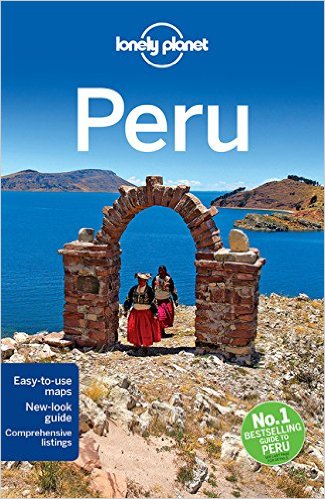
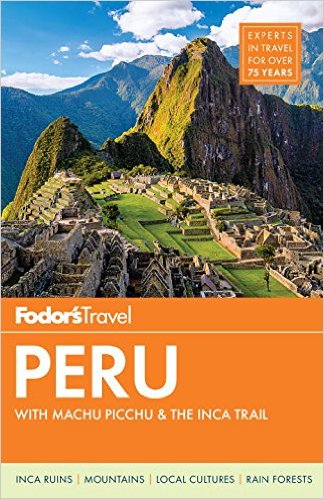
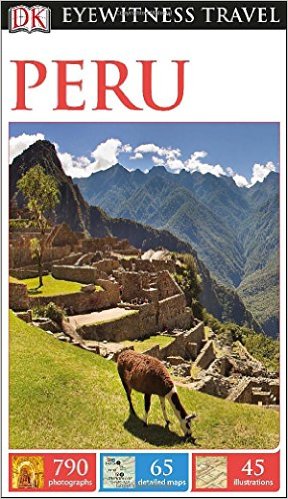
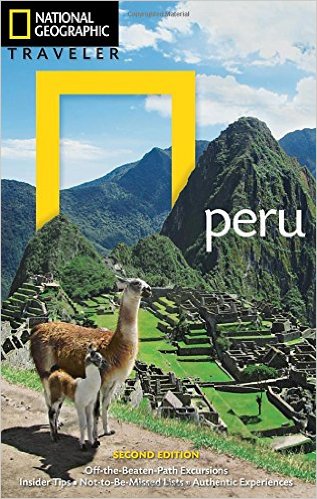
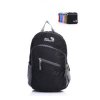


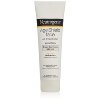
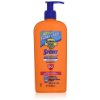


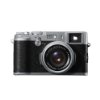

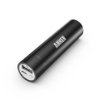













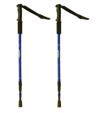

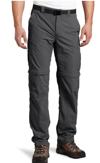
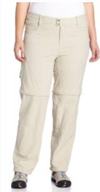


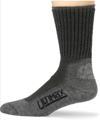








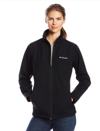
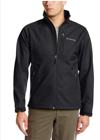
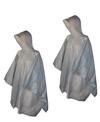
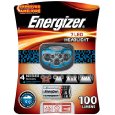
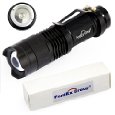

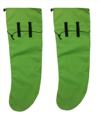

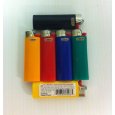
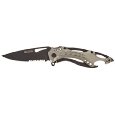
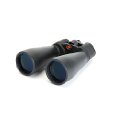

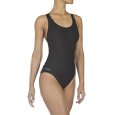
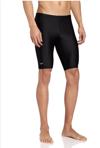

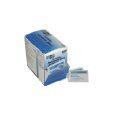
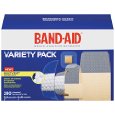







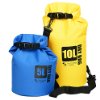



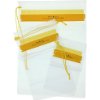

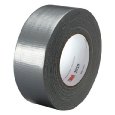


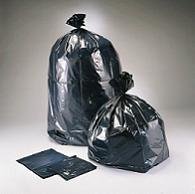


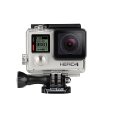
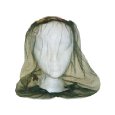

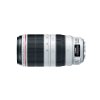
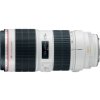
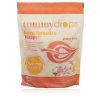
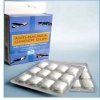
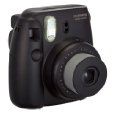







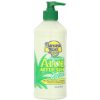
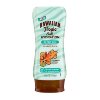
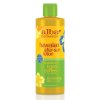
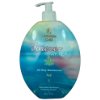
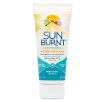
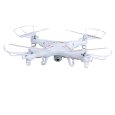
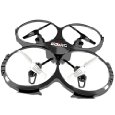
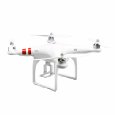

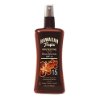
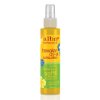




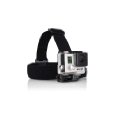










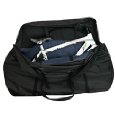







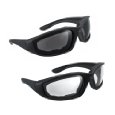

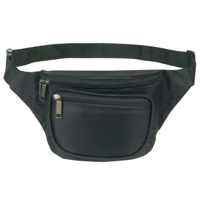

Like this packing list
Like VacayKit